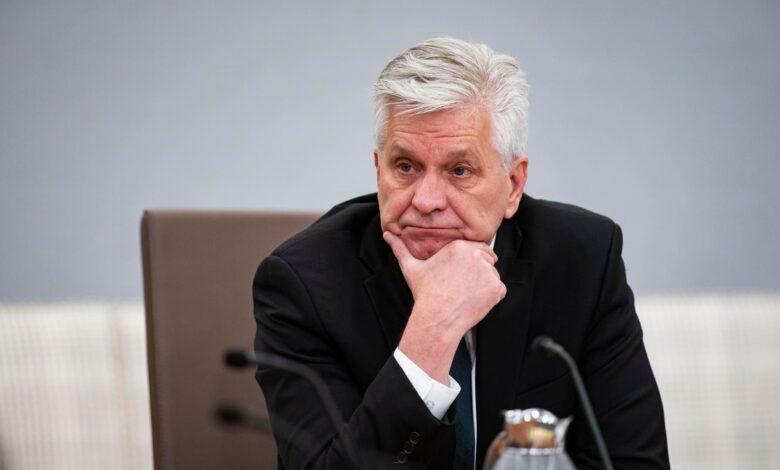Fed Governor Waller backs interest rate cut at September meeting, open to larger move

Christopher Waller, governor of the US Federal Reserve, during a Fed Listens event in Washington, DC, US, on Friday, March 22, 2024. A trio of central bank decisions this week sent a clear message to markets that officials are preparing to loosen monetary policy, reigniting investor appetite for risk.
Bloomberg | Bloomberg | Getty Images
Federal Reserve Governor Christopher Waller on Friday backed an interest rate cut at the upcoming central bank policy meeting in less than two weeks, and indicated he’d be open to a substantial reduction if necessary.
“Considering the achieved and continuing progress on inflation and moderation in the labor market, I believe the time has come to lower the target range for the federal funds rate at our upcoming meeting,” Waller said in remarks prepared for the Council on Foreign Relations in New York.
Other policymakers recently have advocated easing policy soon, but this is one of the clearest indications it will happen at the Sept. 17-18 Federal Open Market Committee meeting. Waller repeated verbiage that Fed Chair Jerome Powell used in late August — that the “time has come” for adjustments to monetary policy.
“Determining the pace of rate cuts and ultimately the total reduction in the policy rate are decisions that lie in the future,” Waller added. He noted that he is “open-minded about the size and pace of cuts” and said, “If the data suggests the need for larger cuts, then I will support that as well.”
His remarks followed a weaker-than-expected nonfarm payrolls report Friday that added to the belief that the pace of hiring is weakening. The Labor Department reported job growth of 142,000, higher than July but still below the 161,000 Dow Jones forecast.
Waller did not specify how much he thinks the Fed should cut or how frequently. But he said he is open to the possibility that it may need to be aggressive in keeping the labor market afloat as inflation moderates toward the central bank’s 2% goal.
He noted that if the labor market deteriorates more quickly than expected, the Fed should react with larger cuts, which he said would lead to “a greater likelihood of achieving a soft landing.”
“Furthermore, I do not expect this first cut to be the last. With inflation and employment near our longer-run goals and the labor market moderating, it is likely that a series of reductions will be appropriate,” he said.
Futures market pricing following the jobs report tilted toward a greater likelihood of a quarter percentage point rate reduction this month. But it also indicated more aggressive moves later in the year, with a half-point move in November and possibly another in December, according to the CME Group’s FedWatch measure.



